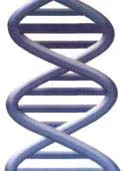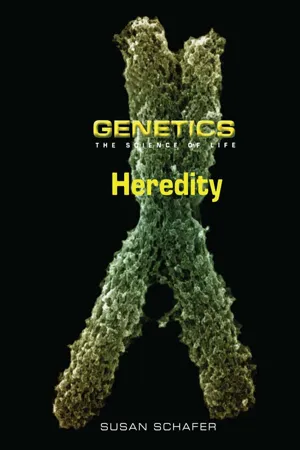eBook - ePub
Heredity
About this book
This study of macroeconomics combines treatment of opposing theories with a presentation of evidence to point the way toward a reconstructed macro research and policy programme.
Frequently asked questions
Yes, you can cancel anytime from the Subscription tab in your account settings on the Perlego website. Your subscription will stay active until the end of your current billing period. Learn how to cancel your subscription.
No, books cannot be downloaded as external files, such as PDFs, for use outside of Perlego. However, you can download books within the Perlego app for offline reading on mobile or tablet. Learn more here.
Perlego offers two plans: Essential and Complete
- Essential is ideal for learners and professionals who enjoy exploring a wide range of subjects. Access the Essential Library with 800,000+ trusted titles and best-sellers across business, personal growth, and the humanities. Includes unlimited reading time and Standard Read Aloud voice.
- Complete: Perfect for advanced learners and researchers needing full, unrestricted access. Unlock 1.4M+ books across hundreds of subjects, including academic and specialized titles. The Complete Plan also includes advanced features like Premium Read Aloud and Research Assistant.
We are an online textbook subscription service, where you can get access to an entire online library for less than the price of a single book per month. With over 1 million books across 1000+ topics, we’ve got you covered! Learn more here.
Look out for the read-aloud symbol on your next book to see if you can listen to it. The read-aloud tool reads text aloud for you, highlighting the text as it is being read. You can pause it, speed it up and slow it down. Learn more here.
Yes! You can use the Perlego app on both iOS or Android devices to read anytime, anywhere — even offline. Perfect for commutes or when you’re on the go.
Please note we cannot support devices running on iOS 13 and Android 7 or earlier. Learn more about using the app.
Please note we cannot support devices running on iOS 13 and Android 7 or earlier. Learn more about using the app.
Yes, you can access Heredity by Susan Schafer in PDF and/or ePUB format, as well as other popular books in Economics & Macroeconomics. We have over one million books available in our catalogue for you to explore.
Information
 | C H A P T E R 1 |
Passing It On
Have you ever passed a note to someone in class? Inside the note is a special message from one person to another. Heredity is like that, except the messages are the genes that are passed from parents to offspring. It all begins with a single cell, which is the vehicle for carrying information from generation to generation.
BODIES: ONE CELL, MANY CELLS
When one cell becomes two, all of the information from the original cell ends up in each of the new cells. Many people think that clones are freaks of nature, but cells clone themselves all the time (including when identical twins are formed). When cells reproduce, they make exact copies of all their parts. This form of reproduction is called asexual reproduction because it requires only one parent cell. The parent cell is not male or female, although it may come from a male or female body. It is just a cell—a body cell, to be exact.
D O W N L O A D




A body that is made of only one cell is called unicellular. Bacteria, amoebas, and most algae are unicellular. If a body is made of two or more cells, it is called multicellular. All multicellular plants and animals, including humans, begin life as a unicellular organism at the moment the sperm fertilizes the egg. These microsopic, one-celled organisms are called zygotes, or fertilized eggs.

Unicellular organisms are usually so small a microscope is needed to see them. Multicellular organisms can grow larger by adding more cells. The cells may be specialized to perform different jobs, making multicellular organisms more complex.

The development of an embryo from a zygote involves many cell divisions by mitosis.
The zygote reproduces asexually and becomes a two-celled organism. From that point forward, the body is multicellular. Every time cells reproduce, the number of cells in the body is doubled. Two cells become four, four become eight, and so on. The result of this multiplication of cells is an embryo, a plant or an animal in its first stage of growth.
Stem Cells and Differentiation
The early embryo’s cells are all alike. These are known as stem cells. Just as the leaves of a tree sprout from a stem, all body cells come from stem cells. Stem cells have the ability to turn into any kind of cell, depending on which genes are “switched on” by special chemicals in the cell. The cells are then differentiated, or specialized, and become heart cells, skin cells, stomach cells, nerve cells, and so on. If the genes that control the development of the heart are activated, stem cells become heart cells. If skin genes are activated, they become skin cells.

Stem cells become different kinds of cells (differentiated) depending upon which genes begin working.
Once a cell is differentiated, it loses its ability to change into another kind of cell because unneeded genes are permanently “switched off.” Scientists are trying to learn how to turn genes on and off artificially. By switching off genes, they could turn differentiated cells back into stem cells. By switching on genes, they could turn stem cells into any kind of cell they wanted to. They could grow new tissues and organs for people who needed them, repair defective cells, and cure diseases.
As body cells reproduce, the body grows. The greater the number of cells there are, the larger the body is. When cells are damaged or old cells die, other cells reproduce to replace them. The process begins with DNA (deoxyribonucleic acid) and involves many organelles, which are structures inside a cell that have special jobs.
Organelles
Mitochondria (my-toe-KAHN-dree-uh; singular mitochondrion) are organelles that produce the energy needed for all of a cell’s activities, including reproduction. Ribosomes make the proteins needed for chemical reactions, such as copying the DNA and breaking down the nucleus. The nucleus must rupture in order for DNA to be released. If this did not occur, the DNA would be trapped in the nucleus and would be unable to get to new cells.

Organelles are special structures inside of a cell, each with a specific function or job.
P O P – U P
Bacteria come in many sizes and shapes. Most are so small that a special microscope must be used to see them. A few can be seen with the naked eye. The three basic bacterial shapes are coccus (KAWK-us), bacillus (buh-SILL-us), and spirillum (spuh-RILL-em). Cocci are named for the Greek word for berry because they are round. Bacillus are rod-shaped and get their name from the Latin for small staff. Spirillum, which is Latin for coil, are twisted like springs.
Some bacteria live in your mouth, excreting sticky sugars that help the bacteria stick to your teeth, which is what forms plaque. Others ooze a jelly-like material that wraps them in a protective capsule. The capsule helps them avoid infection-fighting white blood cells in your body.

Staphylococcus aureus bacteria (staph, for short) are shaped like spheres or berries. They live naturally in the nose and on the skin of about one-third of the human population, sometimes causing skin infections such as pimples.

Lactobacillus is a rod-shaped bacterium often used to make cheese, yogurt, pickles, and other fermented foods.

Spirulina bacteria, found in many oceans, are twisted into a spiral shape.
Cytoplasm (SIGH-tuh-plahz-um) is a fluid with a consistency somewhat like hair gel that surrounds and cushions the organelles. Tube-like structures crisscross the cytoplasm to form a cytoskeleton, or cell skeleton. The cytoskeleton holds the organelles in place and provides the tiny threads needed to transport chromosomes during cell reproduction.
THE BACTERIAL SPLIT
Bacteria reproduce asexually by binary fission (BY pair-ee FIZSH-un). Bi- means ...
Table of contents
- Cover
- Title Page
- Copyright Page
- Table of Contents
- Photo
- Chapter 1 Passing It On
- Chapter 2 Reinventing the Past
- Chapter 3 Mendel and His Peas
- Chapter 4 The Forms of Dominance
- Chapter 5 The Animal Body Plan
- Chapter 6 Genes and Disease
- Glossary
- Search Engine
- Index
- About the Author
